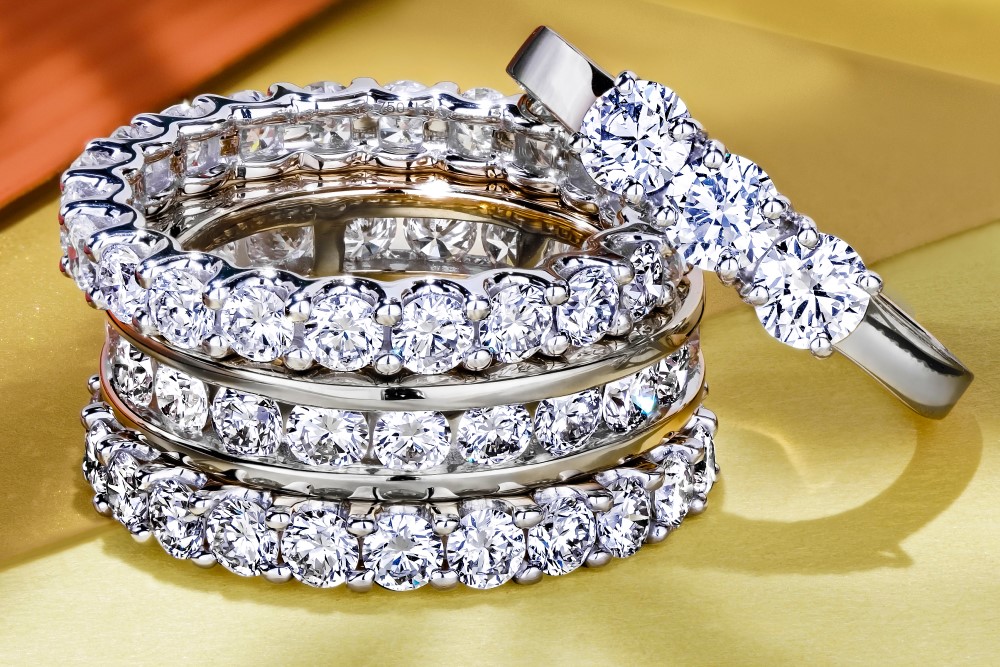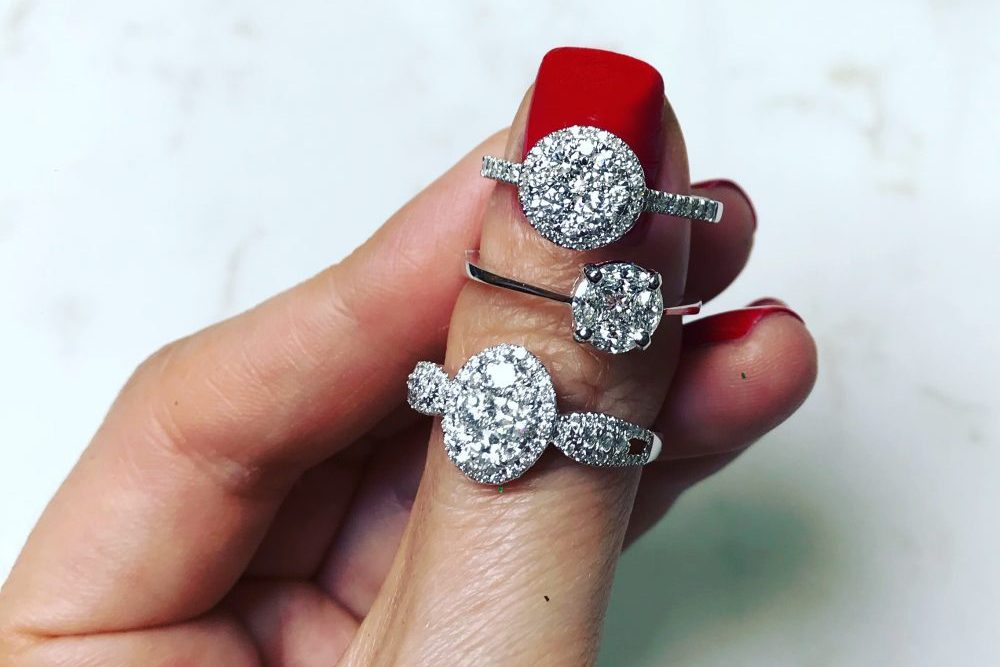
Exploring the Elegance of White Gold
In the world of jewelry and precious metals, white gold stands as a shining example of beauty, sophistication, and value. Its lustrous appearance and versatility make it a highly sought-after choice for crafting exquisite ornaments and accessories. If you’ve ever wondered, “What is white gold?” or are looking to delve deeper into the realm of this precious material, you’ve come to the right place.
Understanding White Gold
White gold is not a natural element but rather a man-made alloy derived from combining pure gold with other metals. The primary reason for alloying gold is to enhance its durability and create a metal that is suitable for intricate jewelry designs. The most common metals used in the composition of w-gold are nickel, palladium, silver, and zinc. These metals are added to gold in specific proportions, resulting in a silver-white appearance that closely resembles platinum.
The Composition of White Gold
To truly grasp the essence of white gold, it’s essential to understand its composition. This precious alloy typically consists of 75% pure gold, with the remaining 25% being composed of other metals. This combination is what gives w-gold its distinctive color and properties.
The addition of alloy metals serves several purposes:
- Enhanced Durability: Pure gold is a relatively soft metal that can be easily scratched or dented. By adding alloy metals, white gold becomes more resilient, making it suitable for everyday wear.
- Achieving the Desired Hue: The choice of alloy metals influences the shade of w-gold, allowing jewelers to tailor the metal’s appearance to their design preferences.
- Cost-Efficiency: W-gold is often more affordable than platinum while offering a similar aesthetic appeal, making it an attractive choice for both jewelers and customers.
The Popularity of White Gold
W-gold’s popularity has soared over the years, with many individuals opting for it over traditional yellow gold or platinum. There are several reasons behind this surge in popularity:
- Contemporary Aesthetic: The clean, modern look of w-gold complements various styles and outfits, making it a versatile choice for jewelry enthusiasts.
- Affordability: As mentioned earlier, w-gold provides a more budget-friendly option compared to platinum, without compromising on elegance.
- Hypoallergenic Properties: W-gold alloys are typically hypoallergenic, making them suitable for individuals with sensitive skin.
Caring for White Gold Jewelry
To maintain the exquisite appearance of your w-gold jewelry, proper care is essential. Here are some tips to keep your pieces in pristine condition:
- Regular Cleaning: Clean your w-gold jewelry with a soft brush and a mild detergent to remove dirt and oils that can accumulate over time.
- Avoid Harsh Chemicals: Keep your jewelry away from chemicals, such as chlorine, which can damage the metal.
- Professional Inspection: Periodically have your w-gold jewelry inspected by a professional jeweler to ensure that prongs, clasps, and stones are secure.
- Safe Storage: Store your jewelry in a soft pouch or separate compartments to prevent scratching and tangling.
-

White Gold
FAQs About White Gold
Q: Is w-gold as valuable as yellow gold or platinum? A: While w-gold is valuable, its worth is determined by factors such as carat weight, craftsmanship, and the market demand for w-gold jewelry. It can be equally valuable in the right context.
Q: Can white gold jewelry tarnish over time? A: W-gold jewelry may develop a slight yellowish tint as the rhodium plating wears off. However, this can be easily resolved by having the jewelry re-plated by a jeweler.
Q: Is white gold suitable for engagement rings? A: Absolutely! W-gold is a popular choice for engagement rings due to its durability, timeless elegance, and ability to complement a wide range of diamond shapes and sizes.
Q: Are there ethical concerns associated with w-gold production? A: Ethical concerns often revolve around gold mining practices. When purchasing w-gold jewelry, look for certifications or inquire about the source to ensure ethical and sustainable practices are followed.
Q: Can I resize w-gold rings? A: Yes, w-gold rings can be resized by a professional jeweler. However, it’s essential to choose an experienced jeweler to maintain the integrity of the piece.
Q: What’s the difference between w-gold and platinum? A: While both metals share a similar appearance, platinum is denser and heavier than w-gold. Platinum is also more resistant to wear and tear, but it comes at a higher price point.
In Conclusion
In the world of jewelry, white gold shines as a captivating and versatile option. Its elegant appearance, affordability, and durability have made it a favorite among jewelry enthusiasts worldwide. Whether you’re considering w-gold for an engagement ring, a special gift, or a personal accessory, understanding its composition and care requirements is essential. With proper maintenance, w- gold jewelry can continue to dazzle for generations, proving that its allure is truly timeless.
Don’t hesitate to explore the world of white gold and add a touch of sophistication to your jewelry collection.

